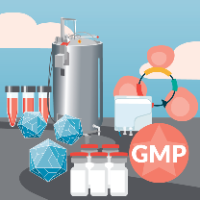Yesterday, today and tomorrow: the evolving landscape of gene therapy manufacturing and process development
Cell & Gene Therapy Insights 2021; 7(3), 373–378
10.18609/cgti.2021.061
The first approved gene therapy procedure, which entailed reinfusion of a patient’s cells that had been modified ex vivo, was performed more than 30 years ago. Over the past three decades, the field has seen tremendous progress, achieving a key milestone with the 2017 approval of the first gene therapy designed for in vivo administration. Today multiple in vivo gene therapies are in late-stage trials, and a diverse array of earlier-stage programs are targeting rare genetic diseases as well as large indications. Along the way, manufacturing of gene therapy vectors became an obstacle to advancing programs from proof-of-concept studies to late-stage clinical development and commercial use. With additional gene therapies moving toward approval, manufacturing continues to be a critical component of success with respect to regulatory approval and commercial viability. Realizing the full clinical and commercial value of gene therapy requires that we understand how the challenges of the past have informed and shaped the state of gene therapy manufacturing. To drive continued improvements in gene therapy manufacturing processes, we must employ lessons learned not only in the gene therapy space but also from the development of other therapeutic classes.
